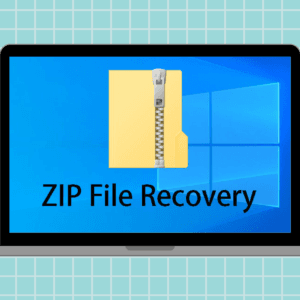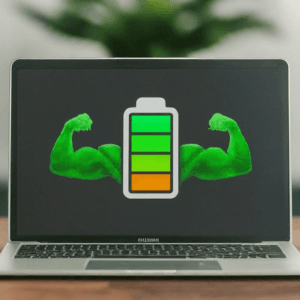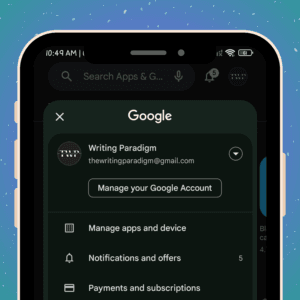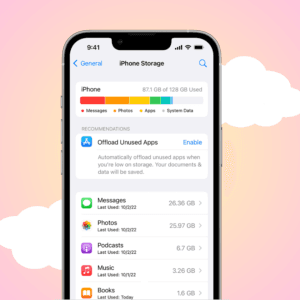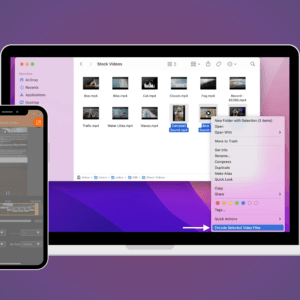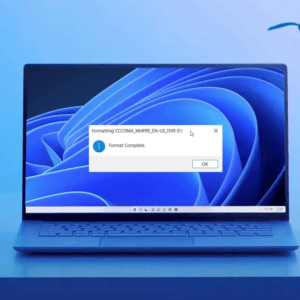When your Mac’s Trackpad doesn’t respond, it may be really aggravating. This issue might be caused by a number of factors, including hardware difficulties, software conflicts, and issues with your operating system. In this post, I’ll guide you through several potential fixes for your MacBook trackpad not working.
1. Update macOS Firmware
The first thing you should do if your MacBook’s Trackpad isn’t working is to update your device to the latest macOS version. Because the most recent macOS updates will not only solve your trackpad issue but also provide you with enhanced security, new features, higher performance, better compatibility, and, most importantly, bug fixes. Follow the steps below to update your macOS version:
Note: Backing up your Mac before updating it to a new version is advised.
How to update the firmware version on macOS Ventura, Sonoma, and later
- Click on the Apple logo in the top left corner of your screen.
- Choose System Settings from the list.
- Navigate to the General tab from the sidebar.
- Now, click Software Update from the menu.
- If Software Update discovers a new macOS version, it will display a dialogue window titled macOS [version name].
- Instal the latest macOS version by clicking the Upgrade Now option in the dialogue window.
How to update the firmware version on macOS Monterey and earlier
- Click on the Apple logo in the menu bar.
- Select System Preferences on the list.
- Choose Software Update.
- A dialogue box with a macOS [version name] will appear if an update is available.
- To upgrade your macOS, simply click on Update Now.
2. Make sure that a built-in trackpad is enabled.
This is yet another method for repairing the MacBook trackpad not working problem. To enable the built-in Trackpad if you are using an external trackpad, you can do the following:
Enable built-in Trackpad on macOS Ventura, Sonoma, and later
- Open the System Settings app and go to Accessibility.
- Uncheck the Ignore built-in trackpad when the mouse or wireless trackpad is present in the box under the Mouse and Trackpad section.
Enable built-in Trackpad on macOS Monterey
- Navigate to the System Preferences and then choose Accessibility.
- Click on Pointer Control under the Mouse and Trackpad section.
- Check that the Ignore built-in trackpad is not selected when the mouse or wireless trackpad is present.
3. Change your MacBook’s Tracking speed
If your Tracking speed is set at the low end of the range, it may look unresponsive and sluggish. Follow these procedures to modify the tracking speed on your MacBook:
- In the System Settings, go to Trackpad in the left menu.
- Note: System Settings can be found as System Preferences in macOS Monterey.
- Under the Point & Click tab, drag the slider next to Tracking speed to adjust it to your comfort.
4. Adjust the Double-click speed
Adjusting the double-click speed on your device can end your MacBook trackpad not working issue. Follow the below-mentioned steps to do so:
Changing the Double-click speed on macOS Ventura, Sonoma, and later
- Go to the Apple logo and select System Settings.
- From the left sidebar, scroll down and select Accessibility.
- Go to the Motor section and choose Pointer Control.
- Now, alter the below mentioned under the Mouse & Trackpad section to your comfort by dragging the slider next to:
- Double-click speed: To change the speed at which your Mac recognizes a double-click.
- Scroll speed: To customize how quickly the pointer reacts while you scroll, navigate to the Mouse Options.
Changing the double-click speed on macOS Monterey
- Navigate to the Apple logo and choose System Preferences.
- Now select Accessibility and go to Pointer Control from the left menu.
- You may customize the Double-click speed using the slider under the Mouse and Trackpad section.
5. Remove Force Click and Haptic Feedback on Mac
To disable Force Click and haptic feedback on your Mac, perform the following steps:
Disable Force click and haptic feedback on macOS Ventura, Sonoma, and later
- Launch System Settings and move to Trackpad.
- Toggle off the button next to Force Click and haptic feedback under the Points & Click tab.
Disable Force Click and Haptic Feedback on macOS Monterey
- Go to System Preferences and head to Trackpad.
- Under the Points & Click tab, uncheck the box before Force Click and haptic feedback.
6. Reset the SMC of the MacBook
Resetting the SMC is a helpful troubleshooting step to attempt if your Mac is acting strangely or if you are having issues with certain hardware functions. Follow these procedures to reset your MacBook’s SMC (System Management Controller):
- Click the Apple logo and choose Shut down.
- Press and hold the Control + Option + Shift keys. Hold all three keys for 5-10 seconds. (Your Mac can switch on its normal.)
- Now, press and hold the power button as well. (If your MacBook is switched on, it will turn off.)
- Hold all four keys down for the next 7 seconds.
- Now release the keys and Turn on your MacBook by clicking the power button after roughly 15-30 seconds.
7. Delete .plist files from macOS
.plist files include data about your Mac’s preferences and settings for a number of programs and services. Deleting a .plist file might help you resolve the MacBook trackpad not working issues with certain programs or services and return them to their default settings.
However, be cautious when deleting.plist files since doing so may hinder the functionality of the associated program or service. Before making any changes to your system, creating a backup of your critical data is typically a good idea. Follow these instructions to delete.plist (property list) files in macOS:
- Open the Finder app and click on Go from the menu at the top of the screen.
- Hold down the Option key and choose Library from the list. This will open the Library folder in Finder.
- In the Library folder, navigate to the Preferences folder.
- Locate the .plist file below and delete it by dragging it to the Trash or right-clicking on it and selecting Move to Trash from the menu.
- com.apple.preference. Trackpad.plist
- com.apple.AppleMultitouchTrackpad.plist
- com.apple.driver.AppleBluetoothMultitouch.mouse.plist (Responsible for Magic Mouse)
- com.apple.driver.AppleBluetoothMultitouch. Trackpad.plist (Responsible for Magic Trackpad)
- com.apple.driver.AppleHIDMouse.plist (Responsible for wired USB mouse)
- Empty the Trash to delete the .plist file permanently.
8. Reset NVRAM or PRAM on Mac
Reset your Mac’s NVRAM (non-volatile random-access memory) or PRAM (parameter random-access memory) to fix the MacBook trackpad not working problem. Here’s how to do so:
- Navigate to the Apple logo on the top left of the screen and select Shut Down on your Mac.
- Start your Mac by pressing the power button.
- Press and hold the Command, Option, P, and R keys simultaneously. This key combination must be pressed before the gray screen shows.
- Hold down the keys until your Mac restarts and the starting sound plays for the second time.
- Now, let go of the keys.
9. Other generic fixes
If none of the aforementioned repairs work, you may attempt the below-mentioned fixes. The root problem of your Mac’s Trackpad not working must be one of the following.
- If your Mac’s Trackpad was operating well before you downloaded the new software, uninstalling the new app may be a quick fix for your device.
- It’s good practice to clean your Mac on a regular basis. You may use a soft, dry towel to wipe your Mac’s Trackpad.
- Another solution is to use Apple Diagnostics to identify any issues.
- Factory resetting your Mac should be considered as the last resort. You may certainly try it if nothing else has worked. However, before factory resetting your Mac, ensure you have backed up all your important files.
10. Contact Apple Support
If nothing else has worked for you and you are still facing the MacBook trackpad not working issue, then the last option is to get in touch with Apple Support. There are various methods to do this:
- Find the product or service you need assistance with by visiting the Apple Support website. From there, you can access articles and other materials to assist you in resolving your problem.
- Use the iOS and macOS versions of the Apple Support app to solve common problems, and contact Apple Support for more help.
- Dial Apple Support toll-free. On the Apple Support website, you can find the phone number for your nation or region.
- To receive assistance with a hardware problem in person, go to an Apple Store or an Apple Authorized Service Provider.
- Use the Apple website’s live chat service.
Is your Trackpad back in action?
Using a MacBook without a trackpad is next to impossible, which makes any problem with the Trackpad all the more frustrating. I hope that using the fixes mentioned above has helped you resolve the problem of the MacBook trackpad not working. Do you have any additional Apple-related questions? Please leave it in the comments box, and I will do my best to find you a solution.
FAQs
To activate or disable Mouse Keys, press the “Option” key five times on the MacBook.
You can control your Mac using keyboard shortcuts, Spotlight search, Accessibility features, and Voice Control features. It is also possible to navigate and select items and input text using only your voice.
Was this helpful?
Nutan is a BCA graduate with a keen interest in the world of consumer technology. A fan of both the Apple and Google ecosystems, he enjoys exploring the latest gadgets and how they can enhance our daily lives. Nutan specializes in crafting clear and informative how-to guides and comprehensive buying advice. His insightful reviews offer an in-depth look at the pros and cons of the newest tech products, helping readers make the best decisions for their needs.


